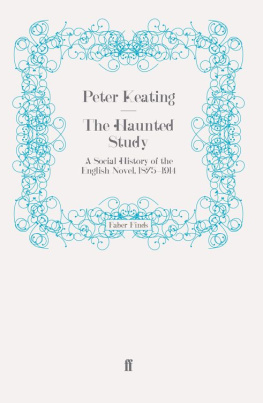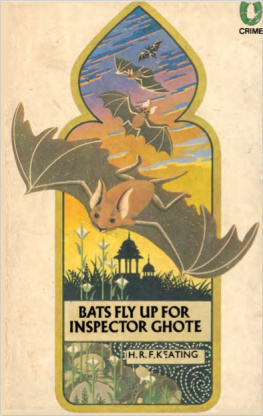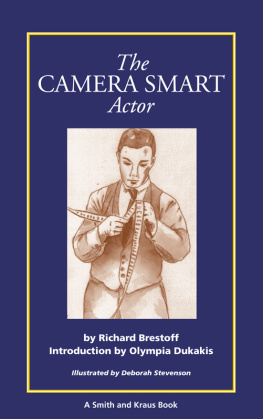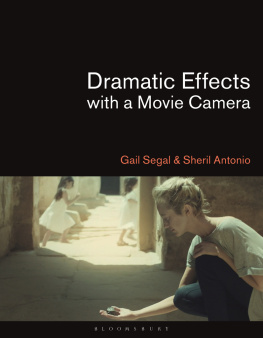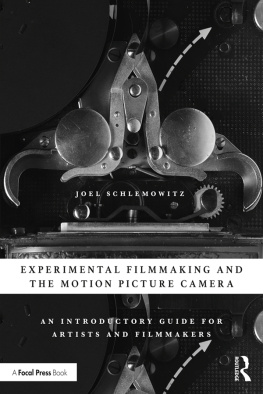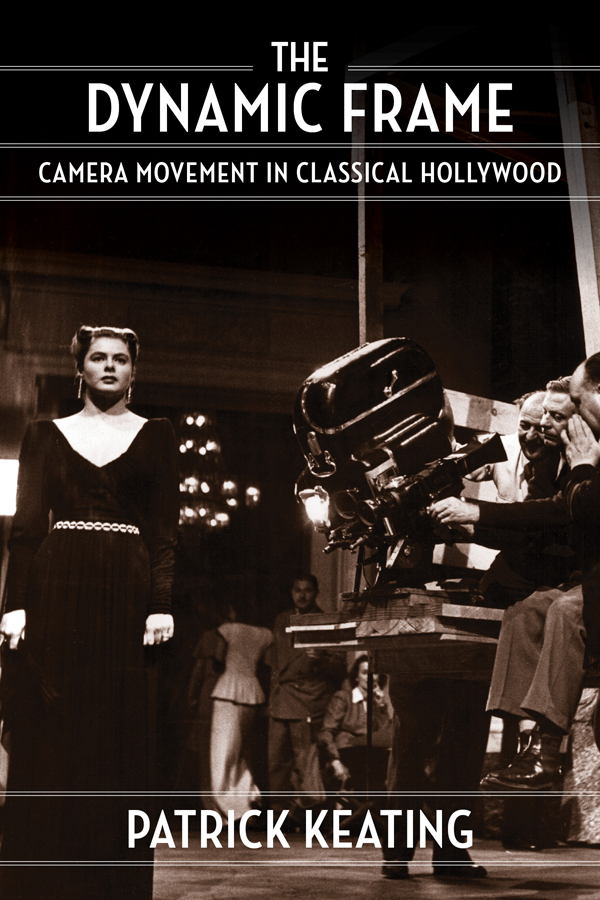Contents
Guide
Pagebreaks of the print version
THE DYNAMIC FRAME
FILM AND CULTURE
FILM AND CULTURE
A series of Columbia University Press
Edited by John Belton
For a complete list of titles, see .
THE DYNAMIC FRAME
Camera Movement in Classical Hollywood
PATRICK KEATING
Columbia University Press
New York

Columbia University Press
Publishers Since 1893
New YorkChichester, West Sussex
cup.columbia.edu
Copyright 2019 Columbia University Press
All rights reserved
E-ISBN 978-0-231-54895-3
Library of Congress Cataloging-in-Publication Data
Names: Keating, Patrick, 1970 author.
Title: The dynamic frame : camera movement in classical Hollywood / Patrick Keating.
Description: New York : Columbia University Press, [2019] | Series: Film and culture | Includes bibliographical references and index.
Identifiers: LCCN 2018037319 (print) | LCCN 2018050507 (ebook) | ISBN 9780231190503 (cloth : alk. paper) | ISBN 9780231190510 (pbk. : alk. paper)
Subjects: LCSH: CinematographyUnited StatesHistory. | Motion picturesAesthetics. | Motion picturesUnited StatesHistory20th century.
Classification: LCC TR848 (ebook) | LCC TR848 .K43 2019 (print) | DDC 777dc23
LC record available at https://lccn.loc.gov/2018037319
A Columbia University Press E-book.
CUP would be pleased to hear about your reading experience with this e-book at .
Cover design: Milenda Nan Ok Lee
Cover photo: Courtesy Everett Collection
For Lisa 
CONTENTS
W hen I was a teenager, my father, Dennis, drove me to the Los Angeles County Museum of Art to see a 35-millimeter screening of a silent movie: Sunrise . More than thirty years later I am still thinking about that movie; this book is the result. Dad, thanks for the ride, and thanks for all of your love and support over the years. Thanks also to my sisters, Coleen and Amy, and my late and much-loved mother, Maria, who helped this project in countless ways, never once making me feel odd for spending so much of my childhood watching old movies.
I began to research this project in earnest in 2011. Since then, I have received the support of several generous institutions. First, the Academy of Motion Picture Arts and Sciences provided me with an Academy Film Scholars grant. Thanks to Shawn Guthrie, who guided me through the grant process with care, and to John Bailey, who expressed warm interest in my work. Thanks also to the staff at the academys Margaret Herrick Library, where Barbara Hall, Faye Emerson, and others helped me locate valuable and sometimes bizarre documents and photographs.
In 2011, I received a summer fellowship from the Harry Ransom Humanities Research Center at the University of Texas at Austin, where curator Steve Wilson pointed me in the direction of much interesting research.
In 2014, the American Council of Learned Societies (ACLS) awarded me a Frederick Burkhardt Fellowship for Recently Tenured Scholars, which supported a nine-month residency at the Radcliffe Institute for Advanced Study at Harvard University, where Judith Vishniac and Liz Cohen ran a magnificent program. I discussed my ideas with many gifted fellows, including V. V. Ganeshananthan, Heather Hendershot, Ben Miller, Joo Pedro Rodrigues, Felix Warnekan, and Jennifer Quick. Haden Guest, Jeremy Rossen, and Liz Coffey helped me conduct research at the Harvard Film Archive. Thanks to Derek Miller for letting me sit in on his class, to Eric Rentschler for inviting me to give a talk at Harvards film studies colloquium, and to Matthew Goldfeder at the ACLS.
My employer, Trinity University, provided summer research stipends in 2011, 2013, and 2015. Thanks to Jennifer Henderson, Mike Fischer, and Mark Brodl for endorsing an extra sabbatical year after I completed my fellowship at Radcliffe, and thanks to Deneese Jones, David Ribble, and the Department of Communication at Trinity for providing a generous subvention to support the cost of the illustrations. The book would not be the same without their support. Elizabeth Poff helped me set up a website where readers can view clips from the films discussed in this book (www.thedynamicframe.net).
Most of the illustrations in this book are frame grabs, but the pictures of dollies and cranes draw on the extraordinarily rich collections of the Bison Archives Photographs Collected by Marc Wanamaker, the Everett Collection, and the Academy of Motion Picture Arts and Sciences. I thank them for the permission to reprint those images here.
Support from Trinity enabled me to take several research trips to archives around the country. At the Lilly Library at Indiana UniversityBloomington, I reviewed the Orson Welles Papers; at the George Eastman House in Rochester, New York, I watched silent films; at the Warner Bros. Archive at the University of Southern California, I consulted scripts and other documents; at the Department of Special Collections at the University of CaliforniaLos Angeles, I examined RKO materials; and at the Department of Special Collections at the University of TennesseeKnoxville, I worked with the Clarence Brown Collection. During my visits to Los Angeles, I greatly enjoyed the hospitality of Jordan Hoffman, Rachel Pinto, and my sister Amy and brother-in-law Aaron.
At Columbia University Press, Chuck Maland and an anonymous reader provided detailed responses to the entire manuscript. Their insights were unfailingly sharp, and I truly appreciate their generosity. Annie Barva was a superb copy editor, consistently improving the manuscripts clarity and consistency. Thanks also to Philip Leventhal and Jennifer Crewe, who showed great enthusiasm for the project from beginning to end. Thanks to Miriam Grossman for all her help and to the graphic designer for crafting a beautiful cover. The Everett Collection provided the image.
In addition to Columbias excellent readers, several scholars read portions of this manuscript over the years. John Belton, David Bordwell, and Dana Polan read almost every word; Adam Hart, Daniel Morgan, and Xinyu Dong also read substantial sections. I am truly grateful that such brilliant minds were willing to share their ideas about camera movement with me.
I have presented portions of this books argument to several audiences over the years. Lisa Dombrowski invited me to cochair a panel on camera movement at the Society of Cinema and Media Studies way back in 2006. Joel Burges encouraged me to present at a conference in Rochester, and Vince Bohlinger invited me to speak at Rhode Island University. Jordan Schonig and Daniel Morgan asked me to participate in their wonderful conference Seeing Films, Seeing Movement at the University of Chicago, where I learned from all of my esteemed fellow panelists; John Peponis invited me to give a talk at Georgia Tech; Kerry Hegarty hosted me at Miami University for a presentation on my research in progress; and Ben Singer invited me back to my alma mater, the University of WisconsinMadison, for a colloquium. Thanks to everyone who invited me and to everyone who listened to my talks.
In 2015, I attended Middlebury Colleges workshop on videographic criticism sponsored by the National Endowment for the Humanities. There, Christian Keathley, Jason Mittell, Catherine Grant, and my fellow participants taught me to put my ideas about camera movement in audiovisual form. Christian, Jason, John Gibbs, and Mikls Kiss subsequently helped me publish video essays based on some of the examples analyzed in this book.


